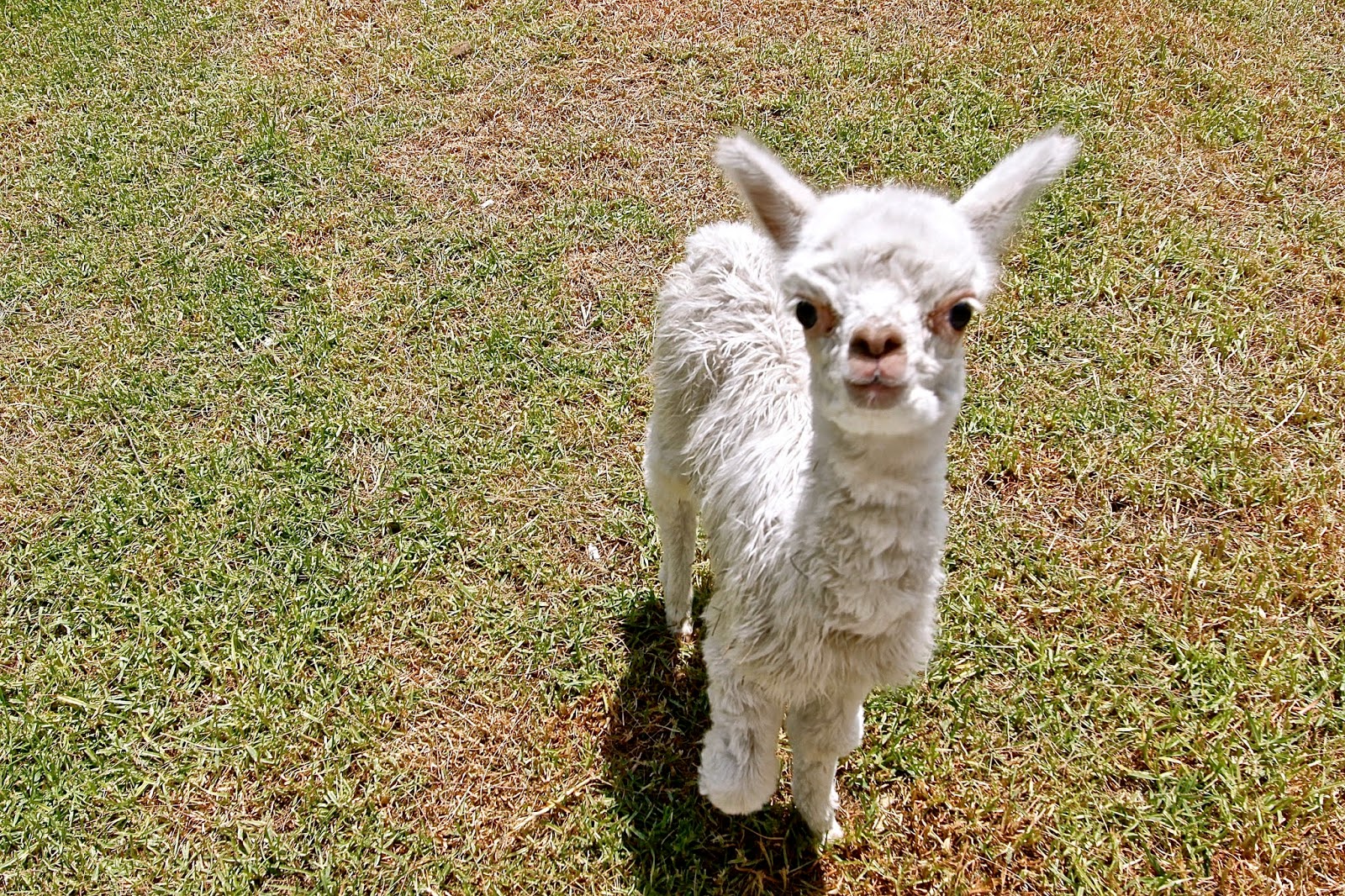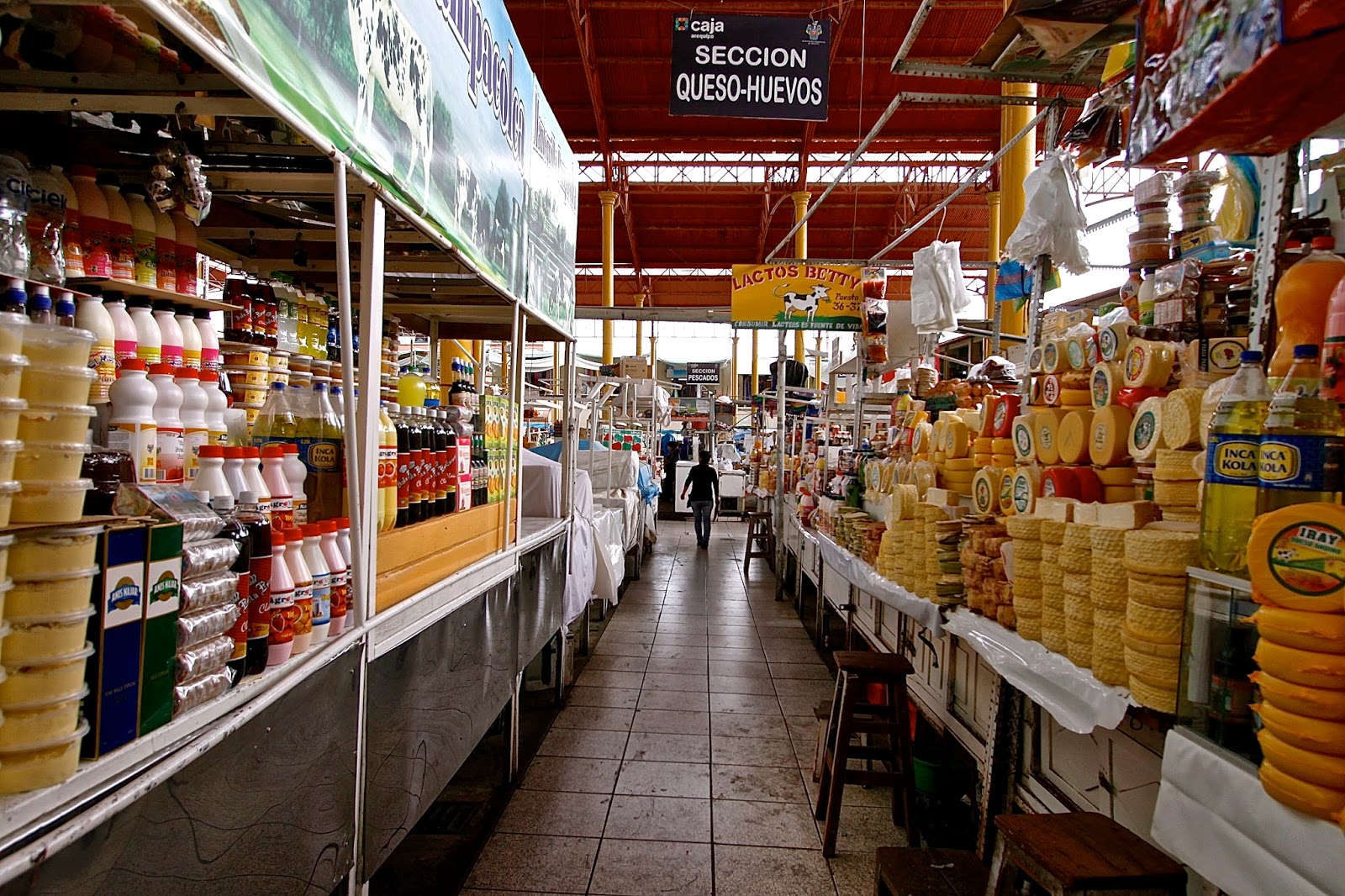The city of Arequipa, in the south of Peru, lies in a valley at the foot of El Misti volcano, a perfect snow-capped cone almost 6 km high. It has been occupied since pre-Columbian times, by the Aymara Indians and finally the Incas, before the Spanish colonials re-founded it in 1540.
There are no buildings remaining from pre-Columbian times, but the Spanish architecture is very fine, constructed from white volcanic sillar stone. Declared a Unesco World Heritage site, it makes an excellent place to stay for a few days.
At an altitude of 2,400 metres, it is also a good spot to acclimatise before ascending to Puno and Lake Titicaca at twice its height.
At the heart of the city is the Plaza de Armas, with its fine central garden, surrounded by arcaded buildings on three sides, and the cathedral on the forth. It is said that the facade of the cathedral was built especially high so as to block the view from the square of El Misti and its neighbouring volcanoes, which had spiritual importance for the indigenous population.
Much less touristic and commercialised than Cuzco, Arequipa is a great place to spend a few days, taking in the sites and getting immersed into the local culture. Spreading out in all directions from the Plaza de Armas, the city of 1 million inhabitants is graced by numerous fine churches, convents and markets, and offers a wide selection of cafes, bars, restaurants and shops.
Where to Stay
The Libertador Hotel Arequipa
Recently renovated, the Libertador Hotel Arequipa is located adjacent to a large park, 10 minutes walk from the Plaza de Armas, in the oldest part of the city.
The hotel has 88 rooms, an outdoor swimming pool, and well tended gardens with animals including llamas and an enormous turtle over 120 years old.
A popular spot for tourist and business travellers, it has elegant public rooms including a cocktail bar, a lounge and business centre, fully equipped gym and spa.
Our twin room was spacious, and simply furnished in Spanish colonial style with solid wooden furniture. The room was quiet, and overlooked an enclosed garden courtyard. It had all that would be expected of a 5 star hotel room including complimentary WiFi, cable TV with BBC World and an iPod docking system.
Breakfast is served buffet style, and is generous. There is a great selection of ripe, sweet fruit which was a highlight. There are also excellent pastries particularly croissants and the local bread, hams and cheeses, as well as cooked-to-order options including huevos rancheros (fried eggs with onions, tomatoes and rocoto chillies) which was very good.
The Libertador Hotel Arequipa is situated a little away from the busy city centre, which means it is not in the hubbub of the old town, but also that it is in a very peaceful spot. There seems to be little concept of noise pollution in Peru, and central city areas are noisy day and night. Taxis are plentiful and cheap, with journeys in the centre costing little more than £1.
Where to Eat
Chicha
Chicha was opened by Gaston Acurio (owner of Astrid & Gaston in Lima), in a fine historic building opposite Santa Catalina Convent. It serves local dishes with some modern touches.
We started with a Chicha Platter (£15.50 ) - this was a selection of popular Peruvian dishes served as appetisers which included deep-fried pork belly (chicharron), a deep-fried pastry with stir-fried beef (tequeno of lomo saltado), and mashed potato dumplings topped with trout and crab (causas). These were good and well presented, particularly the succulent pork belly (hidden underneath the onion salad).
Next was Cuy Frito- stir-fried guinea pig with fried quail eggs, fried plantain and quinoa (£12.50). Guinea pig has for centuries been part of the staple food of Peru, most commonly flattened, then grilled and served whole - head, legs and all. Chicha's version was more sophisticated, with crispy fried fillets of guinea pig, served on top of another Peruvian staple, quinoa. It was a very delicious dish - the meat was richer than chicken, very fatty but not as meaty or succulent as pork.
With the guinea pig, we had Ocopa - fried fresh cheese with aji amarello sauce (Peruvian yellow chilli sauce) and boiled potatoes. This was well flavoured, but in my opinion was not improved by being served cold (£4.50).
With our meal, we had a bottle of Senetiner Malbec 2012 from Argentina (£22). This was well priced, hugely fruity and straight-forward.
Tipika
Tipika is situated a 10 minute walk south of the Plaza de Armas, and perhaps as a consequence gets very few non-Peruvian visitors. It is, however, a very popular, partially open-air restaurant in beautifully gardens, and on the afternoon we visited it was packed with Peruvian families of all ages.
We started with Antecuchos de Corazon (£4.50). These are slivers of beef heart marinated in an intense seasoning of aji panca (dried red chillies), oregano, and cumin among other ingredients, grilled on skewers over charcoal and served with golden potatoes, creole sauce and corn. Antecuchos are a national dish, and the version at Tipika was very good.
To accompany them, we had Yuquitas Fritas (£3). These are deep fried wedges of cassava, a staple also in Brazilian cooking, cassava tuber makes fantastic chips as is more starchy making a good alternative to potato chips. Tipika's yuquita fritas were disappointing though - not sufficiently crispy and some were not even cooked through.
For main course, we had a Tacu Tacu - a dish native to Lima and Ica (£10) consisting of fried rice and beans topped with meats or fish. In this restaurant, it came with huge chunks of Tipika's slow-roasted pork and crackling. This is a signature dish of the restaurant, and was excellent - amazingly succulent and flavoursome pork with very crispy crackling. The rice and beans were fragrant, and flavoured with olive oil.
Our second main was Malaya Dorado (£8). This is a typical Arequipeña dish, of slow roasted beef brisket with roast potatoes and a salad of tomato and red onions. The beef was well flavoured, having been marinated in red wine, rosemary, parsley, and oregano. However, the roasting and lack of a more liquid sauce meant it was a little fibrous and dry.
We shared a dessert - Queso Helado or frozen cheese (£1.50). This was an ice cream based on condensed milk and cinnamon, with a good flavour but poor texture, as it was full of ice crystals suggesting a lack of churning while freezing.
We drank local Arequipeña beer with our lunch, which was crisp and refreshing.
What to Do
Arequipa is a very attractive city, with numerous distinguished colonial houses, churches and convents, and it is easy enough to cover most of the old central part on foot. To get your bearings in the city, it is possible to take a bus tour, but we decided instead to take a 'free' walking tour.
Free Tour Downtown Arequipa
These are organised by the Municipality of Arequipa and the University of San Agustin, and start at the Tourist Office in the Plaza de Armas. They occur at 10am and 3pm, and last 2 hours and thirty minutes. The sites of the city are explained in English.
We walked all over the centre of Arequipa, seeing many churches and historic buildings, and learning more about the city from a native. I thoroughly recommend this as a way to get your bearings in the city, and the suggested donation is around £5 per person.
Visit Convento Santa Catalina
Founded in 1579, the Santa Catalina de Siena Convent is a stunning building, and is a must-do for any visit to the city. Constructed from white volcanic sillar stone, the convent is considered the most important and impressive colonial structure in the city.
 |
| Santa Catalina de Siena Convent - a City within a City |
Women entered the convent to serve as cloistered nuns, never again to return to their homes and families. They were normally the eldest daughters of rich and prominent Spanish-Peruvian families, and for this reason, the convent was very well guarded, looked after and provided for over the centuries.
 |
| A Novice's Room |
After a powerful earthquake which destroyed large areas of the convent, the families stepped in, reconstructing the convent, by building self-contained houses to accommodate their daughters and accompanying servants.
These strict rules were somewhat relaxed by Pope John Paul II when he visited the convent, and today the number of nuns has fallen from nearly 400 to 20, who still live in a part of the convent that is closed to the public.
 |
| Communal Laundry Area |
The convent is huge with various streets, courtyards, gardens, and other communal areas. It is a fascinating place, often described as a city within a city, the Convento Santa Catalina is well worth a few hours of exploration.
 |
| Well and Baking Room |
 |
| The Communal Kitchen |
I suggest hiring one of the female guides who are within the entrance of the convent to take you around - ours was very friendly, spoke perfect English and had recently finished her university degree in tourism so had very interesting insights about the lives of the nuns who used to and still live there.
 |
| I can't believe this being a very busy confessionary! |
Highly recommended. Entry costs £10 per person.
Visit the San Camilo Market
The San Camilo Market, just a couple of blocks south of the Plaza de Armas, is a very busy market and good spot to see local life.
There is everything from fruit and vegetables, meat and fish to household items and Shaman paraphernalia.
Visit the Colca Canyon
The Colca Canyon is said to be deeper than the Grand Canyon, and is on many visitors' itineraries because it is a good place to spot the Andean Condor. A visit there takes two days from Arequipa, and can be arranged by the Hotel Libertador, or by any of the numerous travel agencies in town.
Travel Essentials
Libertador Hotel, Arequipa
Plaza Bolivar s/n
Selva Alegre
Arequipa
Rooms are available for around £70 per night.
Chicha
Santa Catalina 210
Tipika
Luna Pizzaro 407, Vallecito, Arequipa
Convento Santa Catalina
A Cruz del Sur overnight bus ticket from Nazca to Arequipa costs £14 per person including dinner. It was surprisingly comfortable, and we slept all the way to Arequipa!
http://www.cruzdelsur.com.pe
 |
| And It is Bye Bye Baby Alpaca! |

















































0 komentar:
Posting Komentar